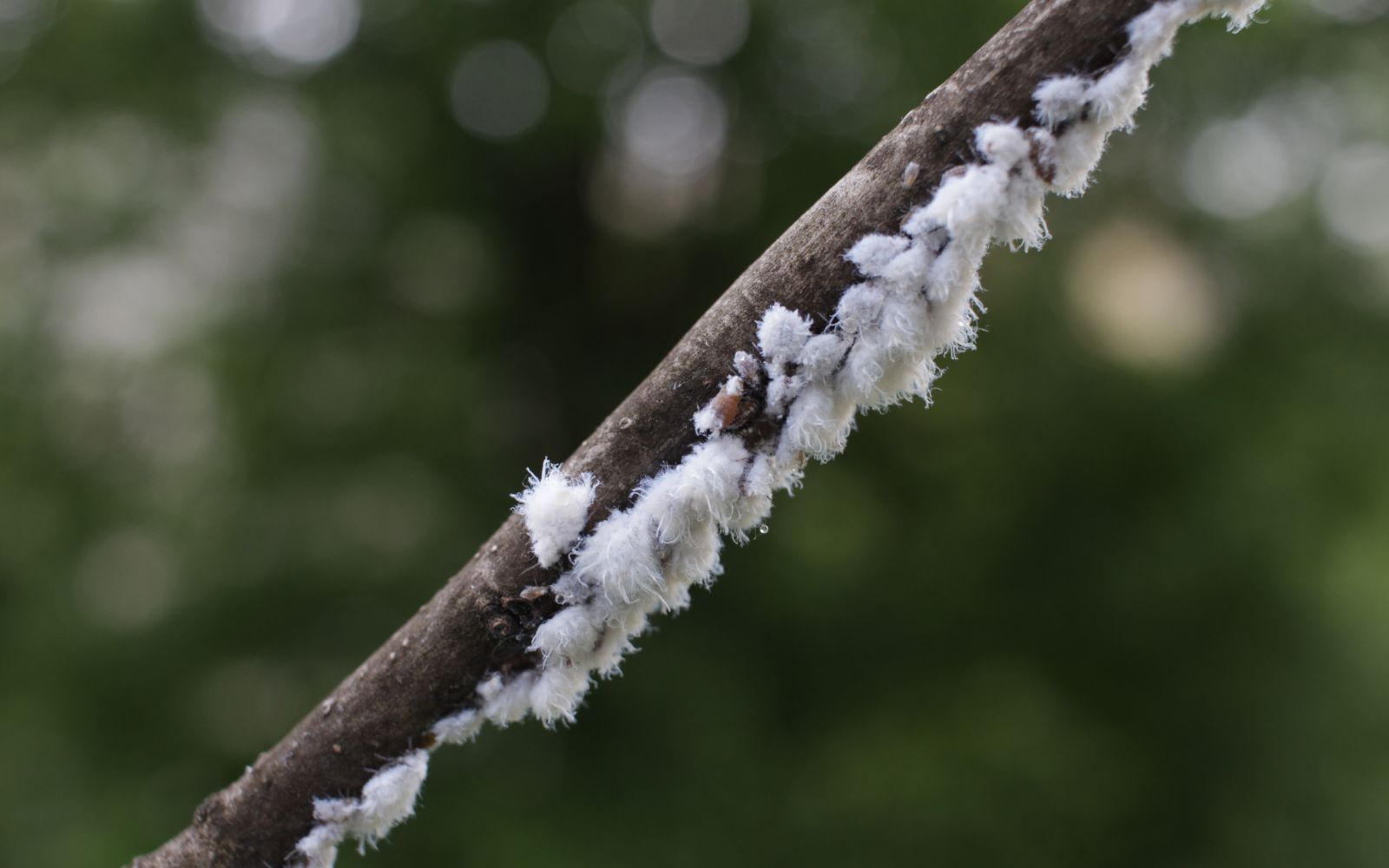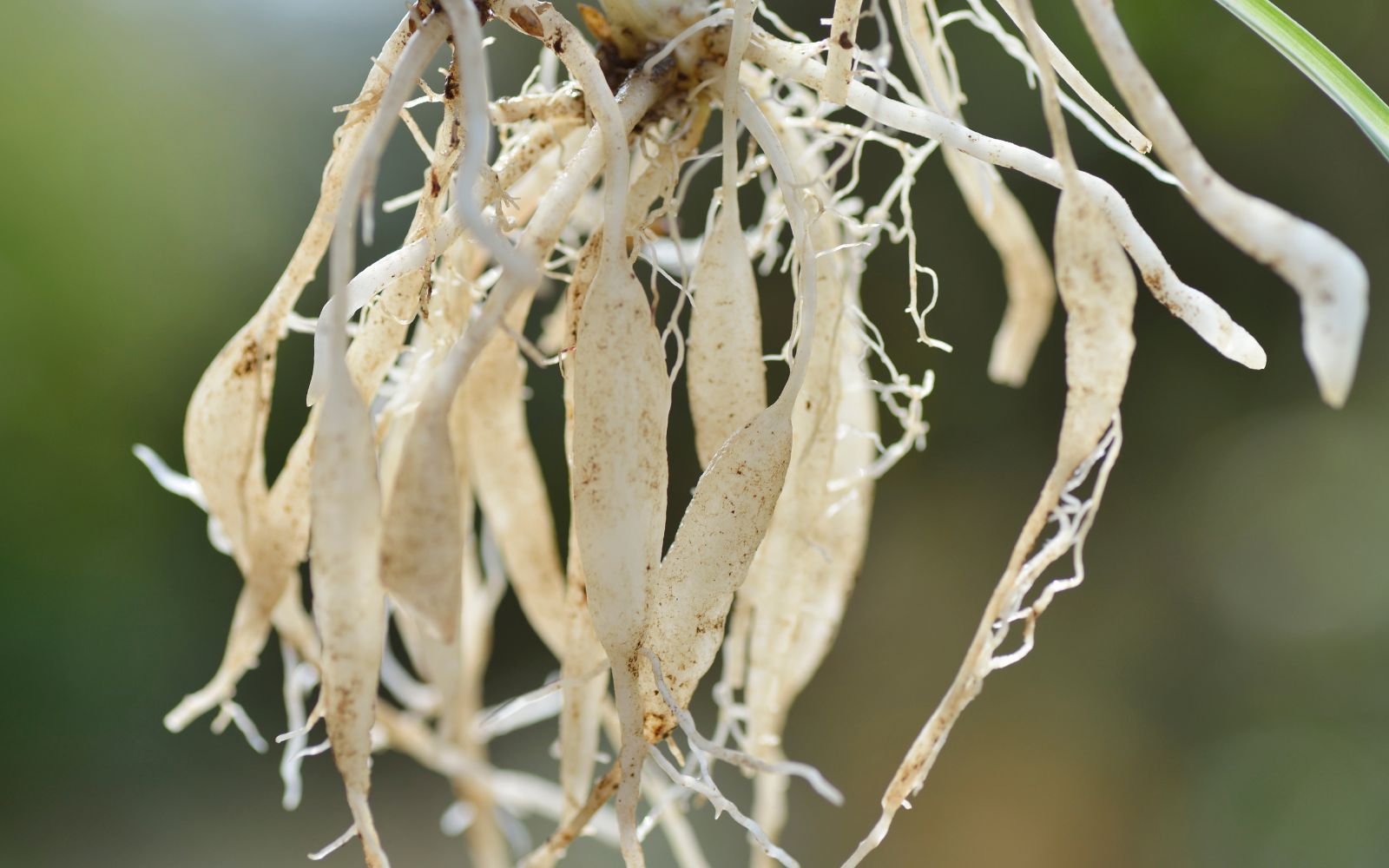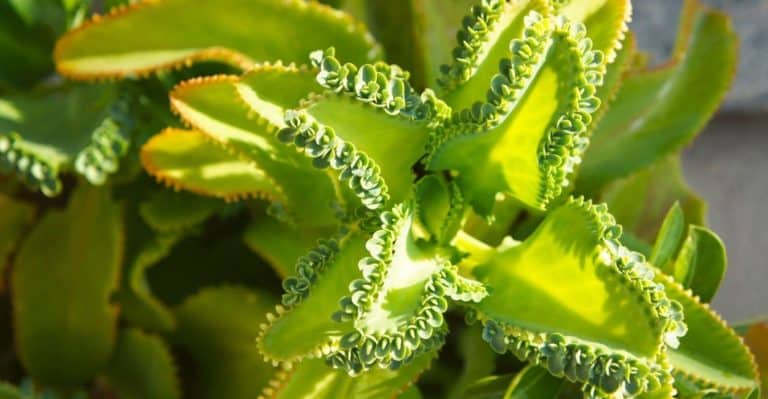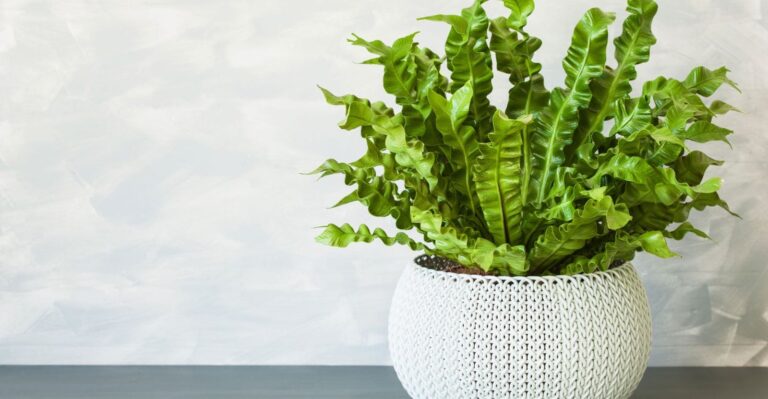Amazon has put together some great Home Gift Deals – save money and get your shopping done at the comfort of your home! Click here to see deals on Amazon
Spider plant is a trendy indoor and outdoor plant that looks good due to its broad striped leaves. Besides its good looks, the spider plant benefits you as it helps naturally clean the air.
Variegated Spider plants are also known as airplane plants and are very easy to grow and maintain. Many people like to place spider plants in their offices or at home.
Due to its leaves hanging downward, you may also use it in the overhanging baskets. Read on for the complete guide on spider plant growing and care.
Spider Plant Varieties
There are 4 different types of spider plants. The scientific name of the spider plant is Chlorophytum comosum. Its varieties are based on the difference in the texture and design pattern of the plant.
- Chlorophytum Comosum Green– It’s a perennial flowering plant native to Southern Africa and Southern Pacific areas. This is a very popular houseplant and grown all over the world. It produces more chlorophyll than other plants of similar species. Chlorophyll gives the enormous bright green color to the leaves. It looks identical to the Hawaiian spider plant.
- Chlorophytum Comosum Variegated – It has white running stripes across its long leaves. These white strip line border around the foliage and green color in the middle. Or broad white stripe in the middle and green thin stripe at the edge.
- Chlorophytum Laxum Zebra – It looks like the variegated type of spider plant. But the main difference is in the stripe color at edges which are more yellowish than white. It grows up to 20- 30 cm in height.
- Bonnie Curly Spider Plants – As its name suggests it has curly leaves and looks like a big bunch of flowers. People also call it a “ribbon plant.”
Let’s find out how can you grow spider plants in your home.
How To Grow Spider Plants
Spider plants are unique in themselves. There are many ways you can grow a spider plant. The two primary methods for spider plant propagation are building it from a seed or planting its root.
Propagating Spider Plant From Seeds
For propagating spider plants from seeds either you buy seeds from the garden shops or harvest the grain yourself. Spider plant blooms tiny flowers which you will need to pollinate if you want it to produce seed.
If you have planted it outdoor, then bees and other insects will pollinate it. But if you have planted it indoors, then you can fertilize it yourself. To do that, take a cotton swab and rub it against the middle section of spider plant flowers.
Let pollen stick to the cotton swab and then rub it to another flower to transfer the pollen. Regardless of which method you chose, if the pollination is successful then after a while you will see the flowers have faded, and a tiny little green seed pouch appears in that place.
When the seeds become ready to harvest, the seed pouch will get dry and split itself for you to collect the seeds. Be careful to let these seeds get ripe first before you harvest. These seeds are very tiny and may get lost.
So be careful when you are harvesting the seeds. You can put some paper or cloth underneath the seed pouch for easy recovery of seeds. You can also shake the seed pouch gently to collect the seeds.
You should be ready to plant it as soon as you harvest the seeds as spider plant seeds don’t remain fertile for long. To plant the seed, get a potting mix and sow the seeds around half-inch deep. Put some water and keep it warm and moist.
Germination of spider plant seed takes a couple of weeks. Be careful not to transfer the seeds to a different pot till it has grown a little bit. Spider plant does not like many movements when it is germinating.
Growing Spider Plant From Baby Spiders “Roots”
The second method is to grow spider plants from baby spiders. These are the little stems that rise from the plant itself. These are the small roots that look like a baby spider.
These spider plant babies are exceptionally delicate, and you have to be very gentle when separating it from the spider plant stem. You have to make sure that you do not break the roots while separating it from the stem. Don’t try to pull it through its source as roots are very fragile, and it will break.
Once you get the spider roots, you can plant it immediately in the potting mix. If you are not ready to plant yet, then you can dip the root in a cup of water. The water will support the root to continue to grow until you are ready to transfer it to the soil.
When putting the spider roots in the soil, move the ground a little bit and plant in it. Add water after the planting, so roots start growing.
Read More: Blue Star Creeper: A Complete Guide on How to Plant, Grow and Care
How To Care For Spider Plants
Many people plant spider plants indoors which makes it easier to care for it. Like any other plant, spider plant needs sunlight, water, air, and nutrients to grow.
Soil
Spider plant does not need any particular soils and will grow well in regular potting soil. But to get the better quality of spider plants, use the soil with a pH between 6.8 and 7.1.
If you are planting a baby spider plant in a planter, then do not compact the ground but keep it loose for proper drainage.
Sunlight
Spider plants can grow in most lighting conditions except bright and direct sunlight. Any indoor place where it gets some indirect sunlight will make it grow.
If you are planting it in the basement or where you do not get natural sunlight then you can also use artificial lighting. Spider plant’s light requirements are modest as it needs at least 12 hours of sunlight to grow and remain healthy.
Keep it away from the household heat vents. But maintain the room temperature and not let it fall below 50 F. In the winter, if possible, move your spider plant indoor.
Water
You should water your spider plant while it is growing. But be careful not to saturate the soil with water. Empty the water holding pans under the planters as soon as possible. Draining the excess water is essential; otherwise, roots will rot.
You should also not let the soil to get dry out like a rock. Generally, watering twice a week is enough at the start but as the spider plant grows you may have to change the water amount.
To check if the spider plant needs water, insert your finger two or three inches inside the soil. If it remains dry then water the plant otherwise recheck it after two or three days.
If you are doing planting in the winter, then let the soil gets a little bit dry before you water it again. Use lukewarm, or room temperature water as cold water could damage the spider plant roots.
For the mature spider plant, water the plant at its root rather than on the leaves. Long blade-like leaves of spider plants will make it hard for water to reach the plant base.
In the winter if you are using a room heater then there will be low humidity. Use a mist sprayer to spray water on the leaves to keep them moist.
This will avoid the tips of spider plant leaves to dry off and die. Keeping your spider plant moist will also prevent it from getting attacked by spider mites.
Fertilizer
Spider plants do not need lots of nutrients. So, you do not need to fertilize it a lot. But you may use diluted fertilizer to feed your plant so it can grow faster and stronger.
If you have organic compost, then you can add in your potting mix which will be enough for the spider plant. You may also use liquid fertilizers or fertilizer pallets.
Pruning
Pruning is essential for a spider plant to maintain its good looks. You can trim the large leaves and stems of the plant in spring or summertime. If you are not planning to get more spider plant roots, then prune these little roots as well.
To prune the leaves, cut it from the base of the plant. For spider roots, cut the stem from the bottom. Pruning excess roots will decrease the nutrients required by your plant.

Weeding
Weeding may not be a huge issue if you are planting spider plants in planters. But if you are planting in your yard then make sure to keep the weeds out of the way especially when the spider plants are propagating.
Common Problems And Solutions For Growing Spider Plants
Spider Mites
Spider mites are the most common pest for the spider plant. Contrary to their names, these spider mites are not a spider but related to the arachnid family of insects.
Unlike other spiders which make a web to catch other insects, these tiny spider mites use spider webs to protect themselves from other insects. It feeds on soft tissues of the spider plant which turn the spider leaves yellow and then dry.
These spider mites hide underneath the leaves which makes it sometimes difficult to observe it. You may use warm water with little pressure to clean these spider mites from your spider plant. But if the infestation becomes severe, then you have to treat it with pesticides.
Mealybugs
Mealybugs are small but very agile white color insects. If you do find it and disturb it, then it jumps off to a different plant. Mealybugs feed on plants by inserting their long sucking tongue into plants and then drawing the sap out of the tissue.
When these are in low numbers, it does not do much damage. But at a large number, it can dry out the spider plants in a couple of days. Mealybugs leave honeydew sticky substances on leaves after feeding.
It causes the growth of molds and fungus to the spider leaves which kills the spider plant. To control mealybugs, keep an eye for the infestation. These are soft white color cotton-like bugs and may be hard to see from a distance.
So, observe your spider plants carefully once in a while for mealybug infestation. If you find a colony of mealybugs then either prune the leave or rub alcohol on mealybugs with Q-tip.
Reduce the watering or fertilization of spider plants. As plants with high nitrogen and moisture-induced softness cause mealybugs to overgrow. Once you get rid of mealybugs, wash spider plants foliage with leaf shine to prevent it from future infestation.

Spider Plant Diseases
There is no specific disease related to spider plants. It makes growing and caring for spider plants so easy. But sometimes it suffers from fungal leaf and root infections. These fungi develop on the plant due to the main two reasons:
- too much watering of the plant
- poor drainage of the excess water from the soil
You can identify a sick spider plant by looking at the tip of the plant which starts getting dry and chips off. This is also known as tip burn. Be cautious that there may be other reasons for tip burn.
If you are using tap water then sometimes too much chlorine added in household water or significant mineral presence in the water can make the plant sick. As an alternative, you can try to switch over to bottled water and see if it improves the condition of your plant.
You may also try changing the soil of spider plants by repotting it. When repotting, pack soil loose to allow the roots to grow. Only use soil mix which is free from weeds, fungus, or any kind of infections.
Aphids
Aphids are small soft insects that thrive on the sap of spider plants. They tend to blend into the color of the plant, so sometimes it is hard to notice them. When infested with aphids, you will see the leaves of the plant start curl and die off.
Aphids secrete a large amount of honeydew like sticky fluids on the leaves. These sweet viscous fluids attract ants and other insects which further damages the plant.
To get rid of aphids, you should cut off the infested area of leave. Clean with pressurized water to remove the aphids but make sure there are no other plants nearby.
For a severe infestation, use chemical treatment of plant such as soap spray to get rid of Aphids from spider plants.

Best And Worst Companion For Spider Plants
Best Companion for Spider Plant
Spider plants are part of the Asparagaceae family. Like other members of the Asparagaceae family, it will grow well when located near tomato, parsley, beets, lettuce, or most other cut flower-type plants.
Given spider plants do not need direct sunlight, you can also plant it with large shade-producing plants. Spider plants need space to grow and spread their leaves, so keep enough gap with the neighboring plants.
Worst Companion for Spider Plant
Do not plant spider plants with other plants which have edible roots. Plants such as potatoes, onions, carrots, garlic, and turnips have edible roots that often attract insects and rodents which may damage the delicate roots of the spider plants.
The grass-like plants like corn and wheat may also attract wireworms which may also invade and infect the spider plant roots.
Spider Plants Commonly Asked Questions And Tips
Q. How long do spider plants live?
A. There is no limited life span of spider plants. The only thing which determines the life span of a spider plant is the possibility of infection from pests and fungus. And external environments like proper sunlight, water, and fertilization.
Many spider plants die due to overwatering, poor drainage, and direct exposure to sunlight. If you avoid those mistakes, then your spider plant can last several years.
Q. How fast do spider plants grow?
A. The growth of spider plants depends on external environmental factors such as sunlight, water, and fertilization.
But in an ideal condition, spider plants can grow up to 60 centimeters in length with roots growing up to 5 – 10 centimeters long. The leaves of spider plants can reach up to 21 – 46 centimeters wide and around 7- 27 millimeters wide.
Q. Why is my spider plant dying?
A. Most of the spider plants die either it is placed in the direct sunlight or given too little or too much water. If you are planting spider plants in a planter, then make sure there is an excess water drainage hole in it.
Empty the excess water from the collection bucket of the planter as soon as possible. The roots of spider plants are sensitive, and overwatering may cause spider plant leaves to start turning dark brown and dry.
Q. Are spider plant poisonous and can a spider plant kill a cat?
A. Spider plants are non-toxic to humans and animals. Cats are particularly attracted to spider plants due to the white stripes around the leaves and the mild hallucinogenic properties of the leaves.
It may not pose any severe health issue to the cats if it chews on spider plants’ leaves. But if a pet eats the leaves in excess, then it may vomit. But if you do find that your pet likes to chew on spider plants then keep it out of reach of your pets with a physical barrier.







